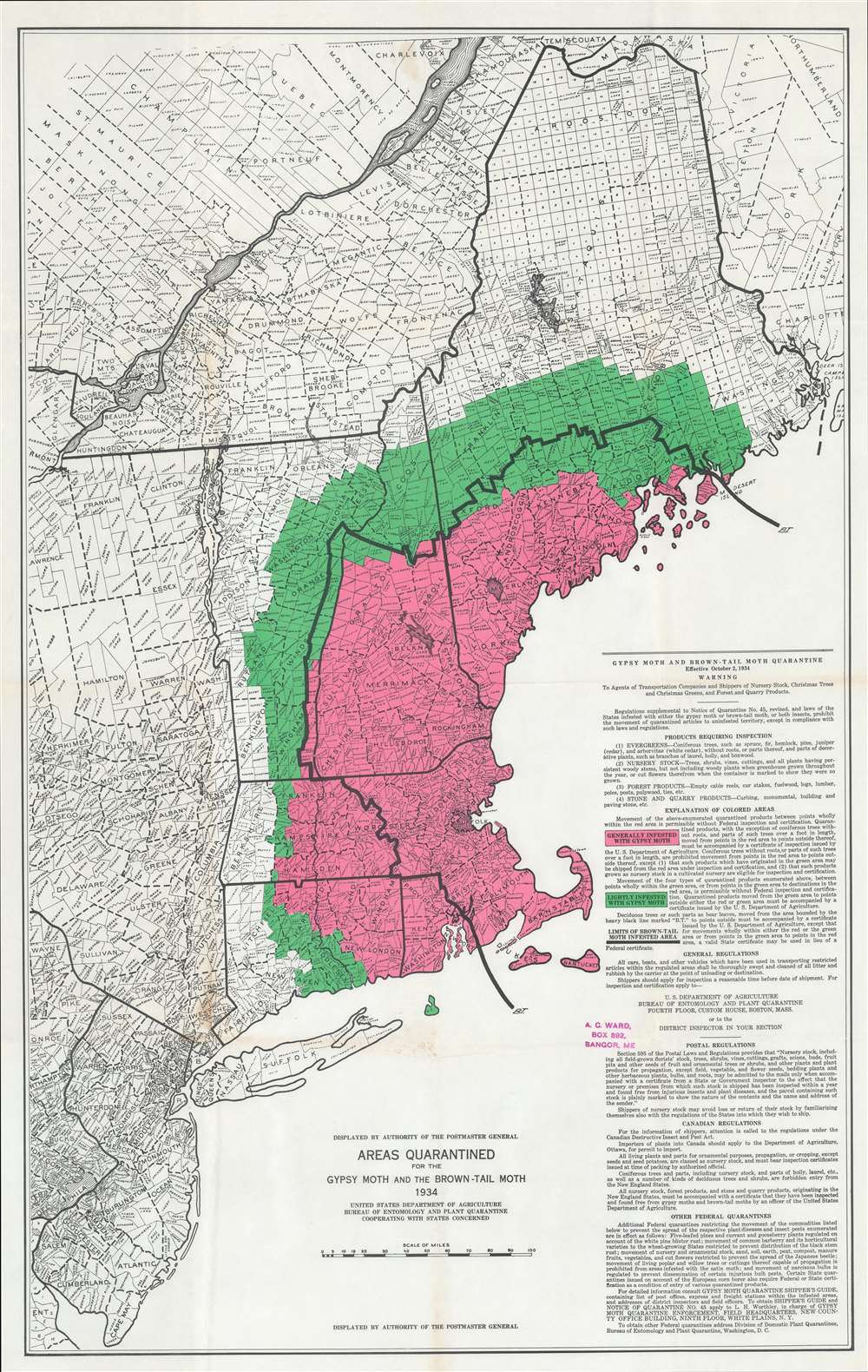1934 U.S. Dept. of Agriculture Map of New England w/ Gypsy Moth Quarantine
GypsyMothQuarantine-deptag-1934$250.00

Title
Areas Quarantined for the Gypsy Moth and the Brown-Tail Moth.
1934 (dated) 33.25 x 21 in (84.455 x 53.34 cm) 1 : 1206857
1934 (dated) 33.25 x 21 in (84.455 x 53.34 cm) 1 : 1206857
Description
This is a 1934 U.S. Department of Agriculture gypsy moth quarantine map of New England. Colors highlight counties stretching from Maine to Connecticut under quarantine by the Bureau of Entomology and Plant Quarantine. Pink counties are 'generally infested with gypsy moth' per the map and are under strict quarantine regulations regarding commerce dealing with evergreens, other forest products, and stone and quarry products. These commodities can be shipped within the pink zone without being inspected by federal officials, but no where else. Green counties are 'lightly infested with gypsy moth' and can ship these products within the green and pink zones without inspection, but not outside those zones.
The Gypsy Moth
Per an August 1935 Connecticut Agricultural Experiment Station bulletin written by W.E. Britton entitled 'The Gypsy Moth', the moth first appeared in the United States about 1869 when Mr. L. Trouvelot imported the species in an effort to selectively breed a hardier species of silk worm. Unfortunately, some caterpillars escaped from their breeding cages at his home in Medford, Massachusetts, and were never found. The incident was soon forgotten, until 1889 when the population had grown large enough to completely defoliate trees. Both the town of Medford and the state of Massachusetts appropriated funds to try and eradicate the invasive species beginning in 1890, but their methods generally failed. The state legislature continued to fund suppression until 1900, when they refused to appropriate more funds for the effort. Suppression ceased for five years, and during that time the gypsy moth spread from 359 square miles to 2,224 square miles. Isolated infestations were successfully eradicated, in fact more than 400 throughout the northeast, but the species was never eradicated. Today, the gypsy moth's range in the United States has only expanded, and now covers all of New England, the entirety of Michigan, most of Wisconsin, and part of northern Minnesota.Publication History and Census
This map was created by the Bureau of Entomology and Plant Quarantine of the U.S. Department of Agriculture in 1934. Editions of this map were published before the present example and after, all illustrating how the gypsy moth quarantine had changed. This is the only known cataloged example of the present 1934 edition.Condition
Very good. Exhibits light soiling. Exhibits wear along original fold lines.

